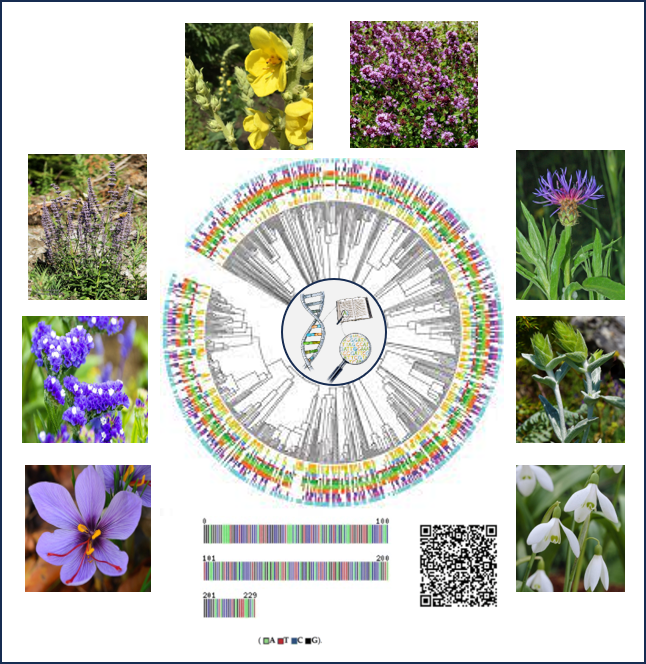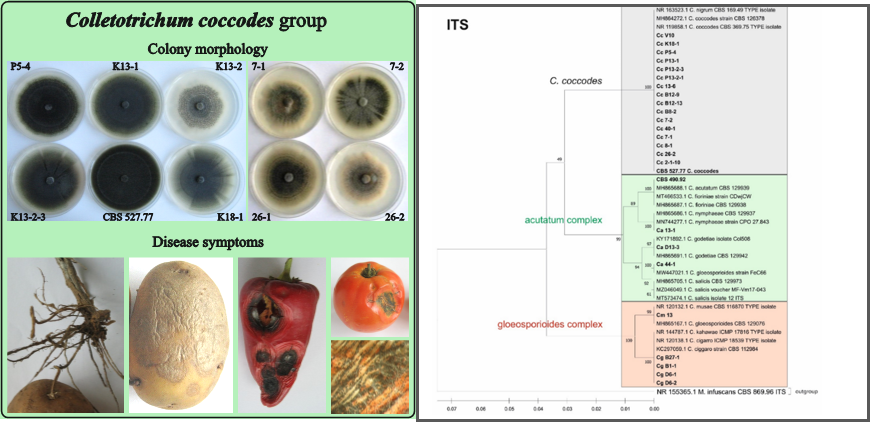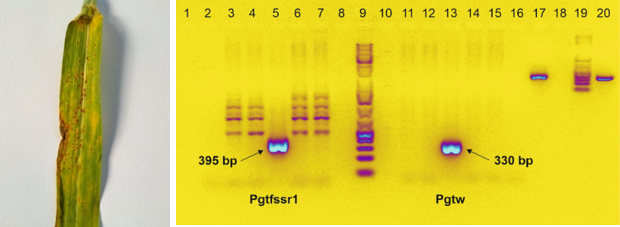GDS – Research topic 1
1. DNA barcoding for TAXONOMIC IDENTIFICATION OF SPECIES AND STUDYING POPULATION DYNAMICS
а/ DNA barcoding of plant genetic resources
The development of high-throughput molecular marker systems for studying various aspects of plant genetic biodiversity is among the priority research directions of the laboratory unit.
DNA barcoding has been widely used as an efficient methodological approach to support the taxonomic identification of species both at individual level and determining the biological content of mixed samples. The method has been also applied for studying species dynamics and interactions at population level.
The research on plants has been mainly performed on genetic resources representative for the Bulgarian biodiversity with a focus on endemic and medicinal plants for which genetic biodiversity information is limited or absent. Comprehensive DNA barcoding experiments based on barcode regions rbcL, matK, trnH-psbA and ribosomal ITS regions address the biodiversity of representatives of species Crocus, Galanthus. The methodology has been optimized for many other plant taxa including- species Centaurea, Thymus, Sideritis, Nepeta, Ludisia discolor. Expanding the range of biological objects including microalgae, honey and propolis is of particular interest.

Read more:
Aneva I, Zhelev P, Bonchev G. 2022 Sideritis elica, a New Species of Lamiaceae from Bulgaria, Revealed by Morphology and Molecular Phylogeny. Plants, 11, 2900. https://doi.org/10.3390/plants11212900
Aneva I, Zhelev P, Bonchev G et al. 2022 DNA Barcoding Study of Representative Thymus Species in Bulgaria. Plants, 11(3), 270, https://doi.org/10.3390/plants11030270
Petrova D, Gašić U, Yocheva et. al. 2022 Catmint (Nepeta nuda L.) Phylogenetics and Metabolic Responses in Variable Growth Conditions. Front Plant Sci. 13:866777. doi: 10.3389/fpls.2022.866777.https://doi.org/10.3389/fpls.2022.866777
Chaneva G, Tomov A, Paunov M et al. 2022 Jewel Orchid’s Biology and Physiological Response to Aquaponic Water as a Potential Fertilizer. Plants, 11, 3181. https://doi.org/10.3390/plants11223181
b/ Molecular identification and genotyping of phytopathogenic fungi in cultivated crops
– Genetic diversity of phytopathogens of Colletotrichum species pathogenic on commercial crops in Bulgaria

Read more:
Manova V., Stoyanova Z., Rodeva R., Boycheva I., Korpelainen H., Vesterinen E., Wirta H., Bonchev G. (2022) Morphological, Pathological, and Genetic Diversity of Colletotrichum Species Pathogenic on Solanaceous Vegetable Crops in Bulgaria. Journal of Fungi, https://doi.org/10.3390/jof8111123
Rodeva R, Stoyanova Z, Manova V, Georgieva R, Stoilov L. Isolation and characterization of Colletotrichum coccodes from potato in Bulgaria. (2016) Acta Horticulturae, 1142, International Society for Horticultural Science (ISHS), 127-134. https://doi.org/10.17660/ActaHortic.2016.1142.20
Stoyanova Z, Rodeva R, Karov I, Kovacevik B, Manova V, Georgieva R. Morphological and molecular characterization of Colletotrichum coccodes isolated from pepper cultivated in Bulgaria and Macedonia. (2013) Matica Srpska Journal of Natural Sciences, 124, https://doi.org/10.2298/ZMSPN1324249S
– Molecular variability of phytopathogenic fungi in wheat

